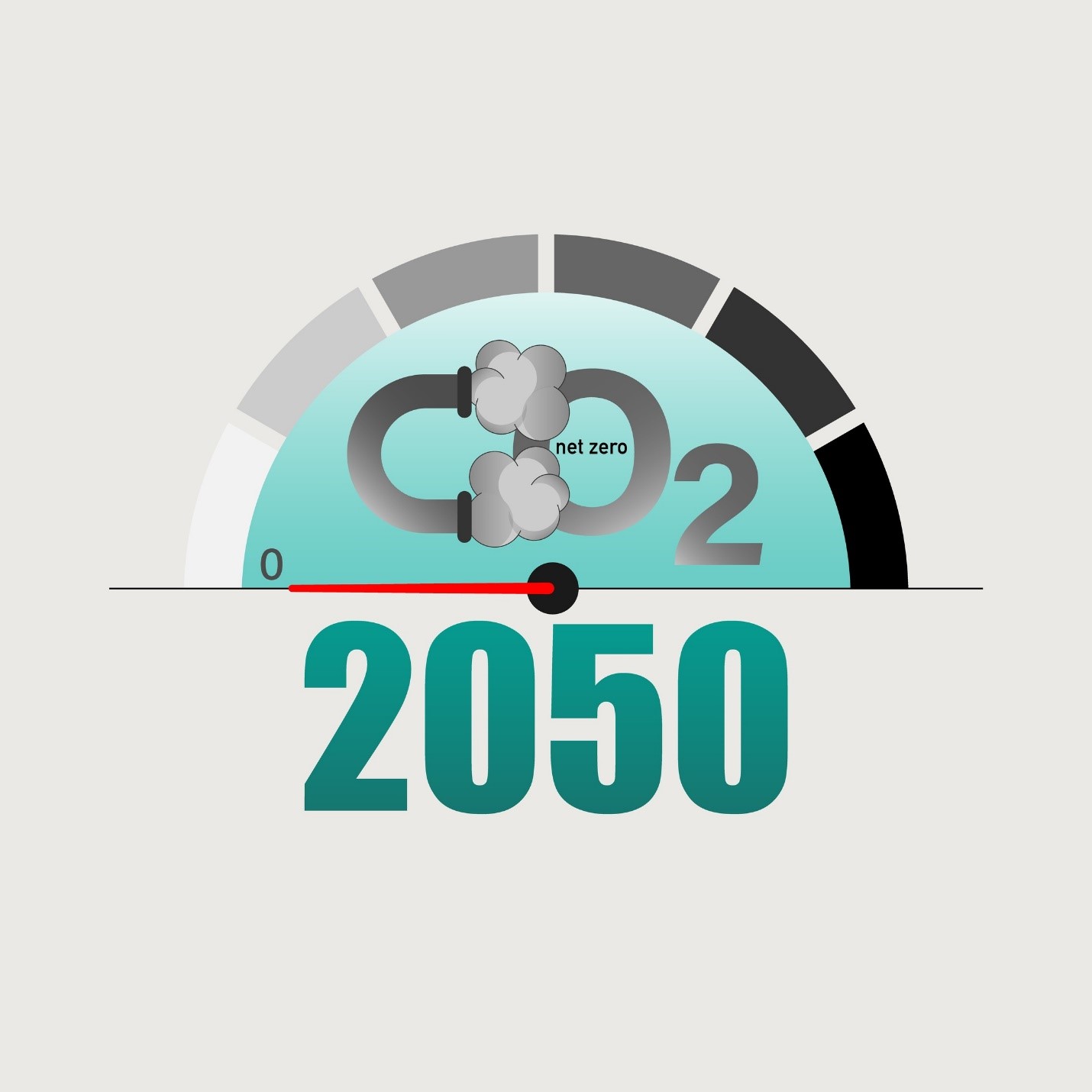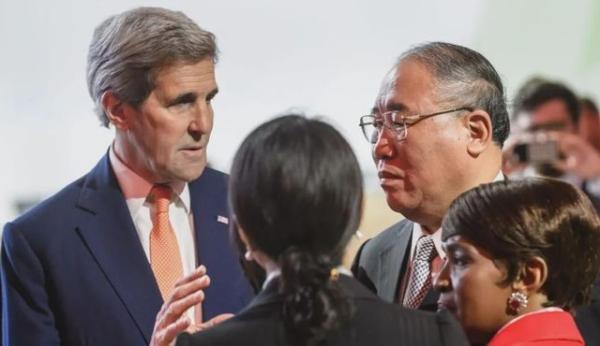1.中国在气候变化领域主张
At the Climate Ambition Summit 2020 on the five-year anniversary of countries agreeing to the Paris Agreement, Chinese President Xi Jinping announced that China would take additional steps to deliver its 2030 ambitions. Specifically, President Xi committed to - values compared to 2005 levels:
Reduce carbon intensity by over 65% by 2030 (compared to its initial commitment of 60-65%)—it was at 48.1% at the end of 2019;
Increase non-fossil energy to around 25% by 2030 (compared to 20% in their current target)—it was at 15.3% at the end of 2019;
Increase forest stock volume to 6 billion cubic meters by 2030 (compared to 4.5 billion in their current target)—it was approximately 4.5 billion cubic meters at the end of 2019;
and Increase total installed capacity of wind and solar to 1,200 gigawatts by 2030 (no previous target)—it was at 415 gigawatts at the end of 2019.
(December 12, 2020, NRDC, China Outlines Additional Steps on Climate Action)
Under the Paris climate deal reached in 2015, China pledged that its emissions would peak around 2030. Mr. Xi promised on Tuesday to move up that timetable, though he did not provide specifics. The bigger surprise, analysts said, was Mr. Xi’s pledge to reach “carbon neutrality” — meaning China’s net carbon emissions will reach zero — by 2060.
More than 60 other countries have pledged carbon neutrality by 2050, a consensus deadline that scientists believe must be met to have a reasonable chance of averting the worst climate catastrophe. Those countries are small compared to China, which now produces 28 percent of the world’s emissions. Even if its target is a decade later, China is now on record setting the goal for the first time.
(September 13, 2020, NYTimes, China’s Pledge to Be Carbon Neutral by 2060: What It Means)

Following a week-long meeting, the National People’s Congress (NPC) of China yesterday formalised the “outline for the 14th five year plan and long-term targets for 2035”.
In short, the five year plan’s outline sets a 18% reduction target for “CO2 intensity” and 13.5% reduction target for “energy intensity” from 2021 to 2025. For the first time, it also refers to China’s longer-term climate goals within a five year plan and introduces the idea of a “CO2 emissions cap”, though it does not go so far as to set one.
(March 12, 2021, Carbon Brief, Q&A: What does China’s 14th ‘five year plan’ mean for climate change?)
2.为应对气候变化,中国等发展中国家面临工业体系改造等艰巨任务
As many investments have a long lifespan, to get close to zero emissions, China needs to immediately stop or curb investment in carbon-emitting infrastructure without carbon capture and storage capacity and dramatically improve the energy efficiency of energy-consuming equipment. Otherwise, the country would need to shoulder the costs of early retirement of these carbon-intensive systems.
According to the Global Energy Monitor, China has 98,520 megawatts (MW) of coal power plants under construction and another 153,726 MW under various planning stages as of July 2020. If built, these power plants risk becoming stranded assets and would get in the way of China’s pursue of carbon neutrality.
Other short-term actions include enabling green power dispatch — which prioritizes dispatching renewable and low-cost electricity over electricity generated by coal — and other incentives to promote renewable energy, to mandate continuously updated industrial energy efficiency standards, and accelerate the electrification of transport vehicles.
Within a few years, China also needs to scale up investments in energy storage, power grid and hydrogen technologies; reduce the demand for industrial products (steel, cement, plastics, chemical products, etc.); develop alternatives for industrial products; electrify the energy supply for industries; and promote a systemic shift to low-carbon transport modes.
(September 30, 2020, World Resources Institute, 4 Questions About China's New Climate Commitments)

But totally phasing out all fossil fuel consumption would be very difficult, particularly in the industrial sector where coal is used to produce steel, cement, and other materials at high heat. So, to reach net-zero carbon emissions by 2050, China would cut these emissions from a projected peak of 10.5 billion tons to 1.7 billion tons by mid-century. To offset those remaining emissions, China would lean heavily on carbon sinks and negative emissions — methods of trapping and absorbing emissions.
But relying on negative emissions is by no means a sure bet since many of the technologies have not yet been proven at scale. China does have a history of massive tree-planting campaigns, but it has only just started to develop facilities to capture carbon emissions from industry and power plants.
(October15, 2020, Vox, How the world’s biggest emitter could be carbon neutral by 2050)
3.新兴国家希望并需要从资金、技术等方面得到美国等发达国家的支持及援助。
Emerging countries are highly sensitive to the cost of energy, and the U.S. International Development Finance Corporation (DFC) could offer affordable loans to finance clean energy projects. Such loans could displace fossil fuels and contribute to broader climate change mitigation. The DFC has considerable experience with infrastructure finance in emerging countries and can lend up to $60 billion under current rules.
The United States can also support emerging countries in their efforts to regulate energy projects.
To enhance regulatory capacity in emerging countries, the U.S. Agency for International Development (USAID) should expand technical cooperation with countries that plan large energy investments in the coming 5-10 years. USAID programs that provide host country regulators with technical knowledge and financial resources would put pressure on project developers to minimize their adverse environmental and social impacts. To make such programs attractive to emerging countries, the United States should explicitly offer additional clean energy finance to ensure that increased environmental and social oversight does not leave the host country without the energy that it needs for economic growth.
This dual strategy of low-interest clean energy loans and capacity support would trigger a virtuous cycle. With more affordable financing provided by the United States, demand for clean energy from host countries would increase. Then, clean energy costs would decrease due to economies of scale and learning by doing. The reduced costs of clean energy in return reinforce the host countries’ demand for renewable energy and create a more favorable space for China’s outward clean energy investments. Furthermore, as global demand for fossil-fuel finance would decrease, Chinese banks and developers would re-orient their efforts toward clean energy projects.
(January 7, 2021, the Brookings Institution, Why the United States should compete with China on global clean energy finance)

4. 关于中国正在将“一带一路”转变为绿色之路的情况和看法
However, disturbing as these coal power projects are, most of them were actually launched before 2013, when the BRI was proposed. Furthermore, China’s involvement principally took place in the form of market-driven project contracting (126 projects), which indicates the limited role of Chinese stakeholders in project decision-making.
It would be unfair to not take China’s soaring clean energy investments into consideration when assessing the impacts of the BRI on climate change. Today, as Chinese clean energy firms are competing for domestic market share, they are also increasingly going global. In 2015 and 2016, seven of China’s 19 overseas clean energy investments were recorded in BRI countries from Egypt to Vietnam, with a total value of $11.8 billion.
In addition to clean energy investments, the added infrastructure finance that is attributed to the BRI can also generate favorable outcomes.
A less visible, but not less remarkable, potential achievement for the BRI is in fostering so-called South-South climate change cooperation. China has been an active practitioner in this area with its increasingly generous contributions of climate assistance.
In sum, as the BRI is a massive undertaking, its impact on climate change is complex. China is well aware that a climate-unfriendly BRI is a loss it cannot afford, which is why Chinese leaders have vowed to “green” the project. It is worth expecting that the BRI will contribute, rather than undermine, the global efforts to tackle climate change. However, to this end, China still has a lot to do.
(January 18, 2018, the Diplomat, The Climate Change Promise of China’s Belt and Road Initiative)
5.中美气候变化进行的合作
China and the US are "committed to working together" on the issue of climate change, and will cooperate on multilateral fronts including the Paris Agreement, said a joint statement issued on Sunday between the two sides following US climate envoy John Kerry's visit to Shanghai.
In particular, it stressed the implementation of the Paris Agreement. The two sides pledged to strengthen their efforts and together tackle the challenges to realize the principles outlined in the Agreement to control the global average temperature rise below 2C, and strive to limit it to 1.5C.
The two countries will continue to discuss, both at the 26th UN Climate Change Conference of the Parties (COP26) to be held in UK's Glasgow and beyond, concrete actions in the 2020s to reduce emissions to keep the temperature limit aligned by the Paris Agreement within reach.
They include cooperation on renewable energy, green and climate-resilient agriculture, low-carbon transportation, and emissions of methane and other non-CO2 greenhouse gases.
(April 18, 2021, Global Times, China, US commit to climate cooperation amid strained ties)


